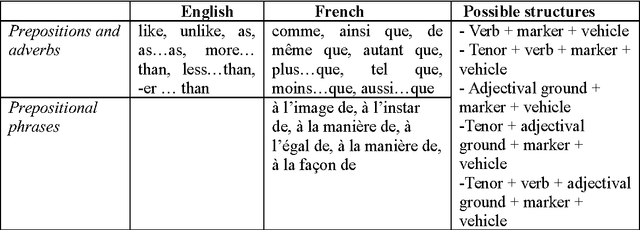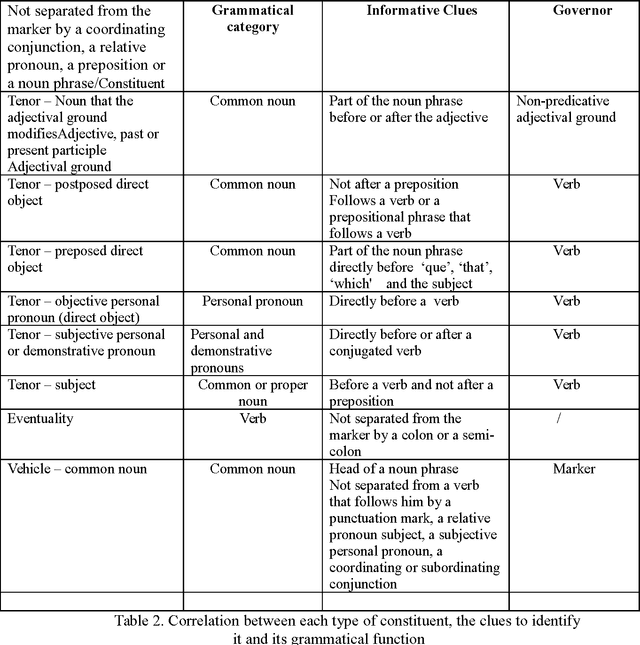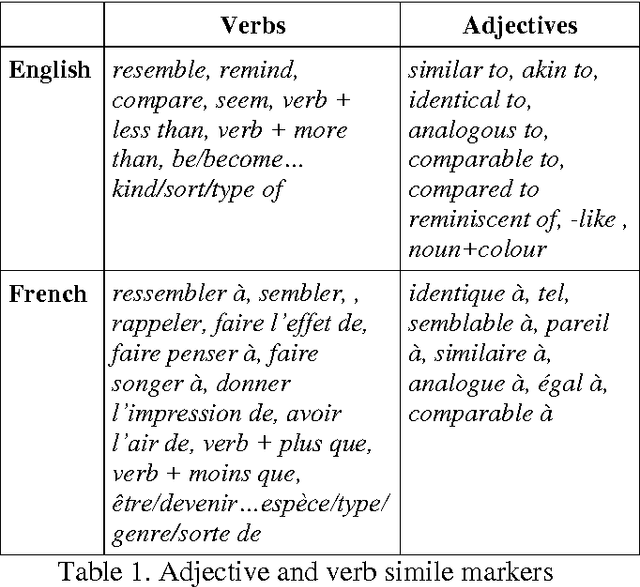Suzanne Mpouli
ACASA
"Pale as death" or "pâle comme la mort" : Frozen similes used as literary clichés
Jun 13, 2016



Abstract:The present study is focused on the automatic identification and description of frozen similes in British and French novels written between the 19 th century and the beginning of the 20 th century. Two main patterns of frozen similes were considered: adjectival ground + simile marker + nominal vehicle (e.g. happy as a lark) and eventuality + simile marker + nominal vehicle (e.g. sleep like a top). All potential similes and their components were first extracted using a rule-based algorithm. Then, frozen similes were identified based on reference lists of existing similes and semantic distance between the tenor and the vehicle. The results obtained tend to confirm the fact that frozen similes are not used haphazardly in literary texts. In addition, contrary to how they are often presented, frozen similes often go beyond the ground or the eventuality and the vehicle to also include the tenor.
Investigating the stylistic relevance of adjective and verb simile markers
Nov 10, 2015
Abstract:Similes play an important role in literary texts not only as rhetorical devices and as figures of speech but also because of their evocative power, their aptness for description and the relative ease with which they can be combined with other figures of speech (Israel et al. 2004). Detecting all types of simile constructions in a particular text therefore seems crucial when analysing the style of an author. Few research studies however have been dedicated to the study of less prominent simile markers in fictional prose and their relevance for stylistic studies. The present paper studies the frequency of adjective and verb simile markers in a corpus of British and French novels in order to determine which ones are really informative and worth including in a stylistic analysis. Furthermore, are those adjectives and verb simile markers used differently in both languages?
 Add to Chrome
Add to Chrome Add to Firefox
Add to Firefox Add to Edge
Add to Edge